Este post também está disponível em:
Português
English
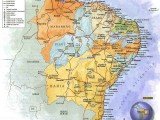
The Cultural Aspects of the Northeast Region are well known for its strong and striking cultural aspect.
The Northeast Region of the Brazilian territory is composed by the states of Alagoas, Bahia, Ceará, Maranhão, Paraíba, Pernambuco, Piauí, Rio Grande do Norte and Sergipe.
Its total area is 1,561,177km², similar to the area of Mongolia. The region has 3,338km of beaches, Bahia being the state with the longest coastline with 938km and Piauí with the shortest, with 60km of coastline.
Because of its different physical characteristics, the region was subdivided by IBGE into four sub-regions: Meio Norte, Caatinga, Agreste and Zona da Mata.
It presents great cultural plurality, with diversified elements, for this reason some elements that integrate the culture of the region will be addressed.
See also Evolution and History of Plastic Arts of the Northeast
Cultural Aspects of the Northeast Region
Among the manifestations and cultural aspects of the northeast region are dances and festivals such as bumba meu boi, maracatu, caboclinhos, carnival, ciranda, coco, terno de zabumba, marujada, reisado, frevo, cavalhada and capoeira.
Some religious manifestations are the feast of Iemanjá and the washing of the Bonfim steps.
Cordel literature is another strong element of Northeastern culture.
The artisanship of the Northeast is represented by the work of lace, clay dolls, tiles and ceramics, traditional straw bags, clay dolls etc….
The typical dishes are: carne de sol, fish, seafood, buchada de bode, sarapatel, acarajé, vatapá, cururu, feijão-verde, canjica, arroz-doce, bolo de fubá cozido, bolo de massa de mandioca, broa de milho verde, pamonha, cocada, tapioca, pé de moleque, among many others.
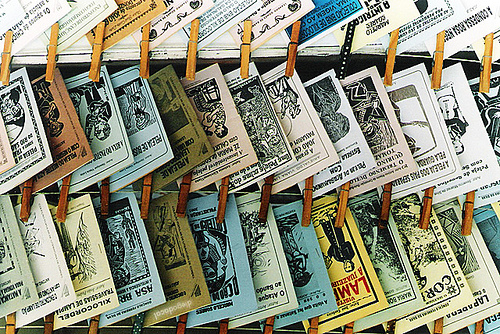

Literatura de Cordel
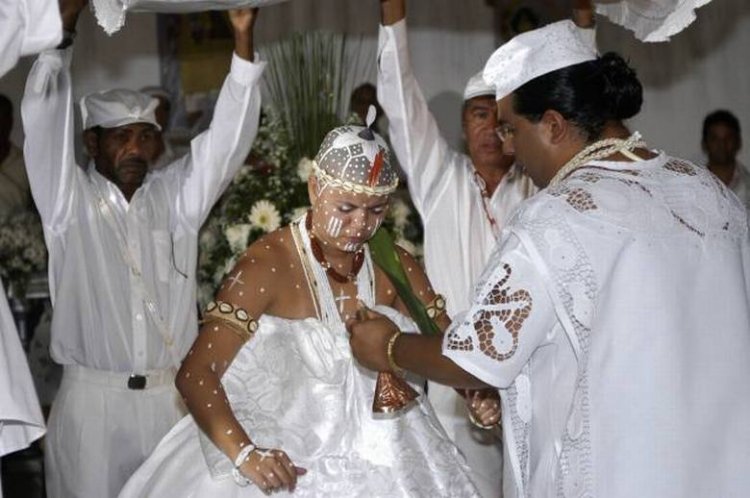
Candomblé

Afoxê
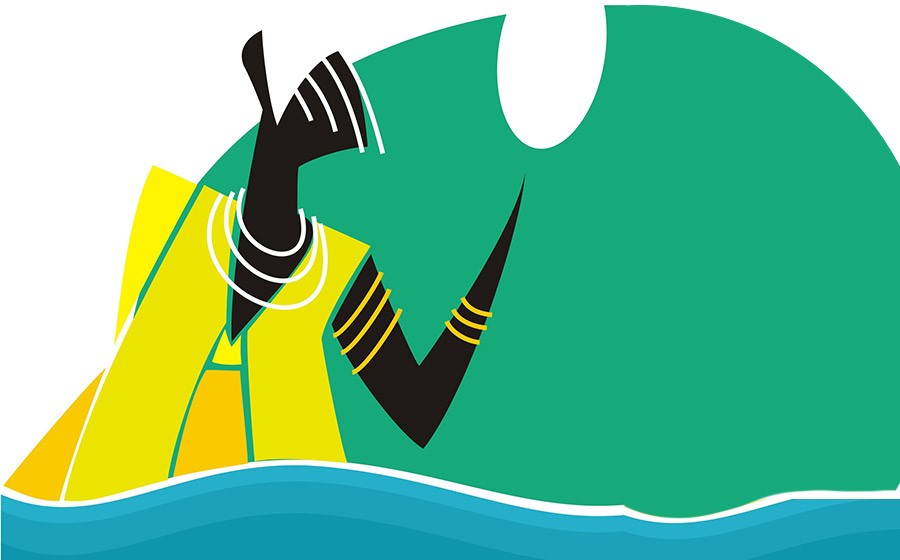
Candomblé
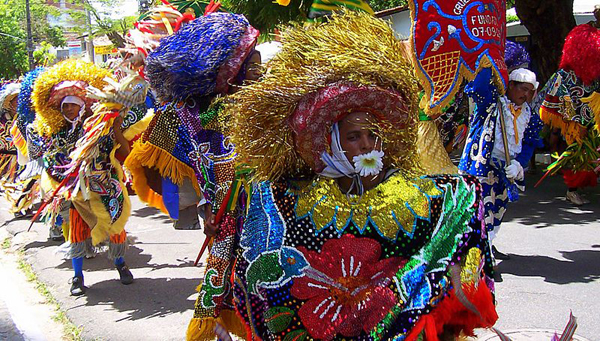
Maracatú
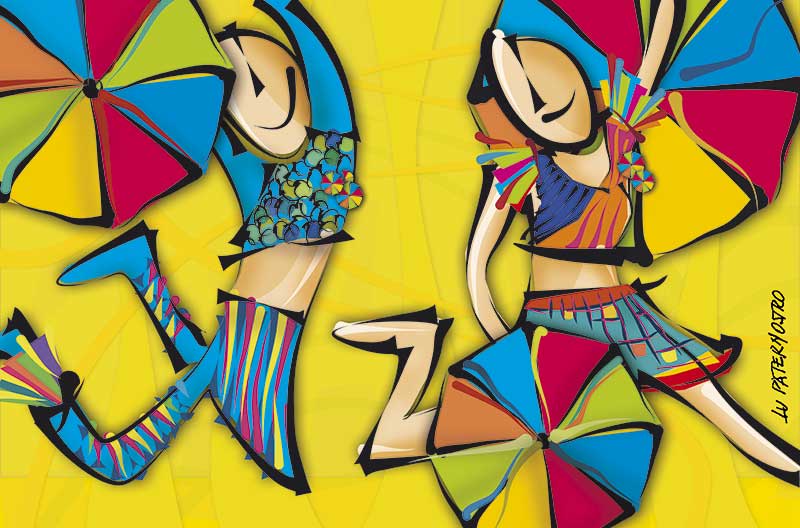
Frevo
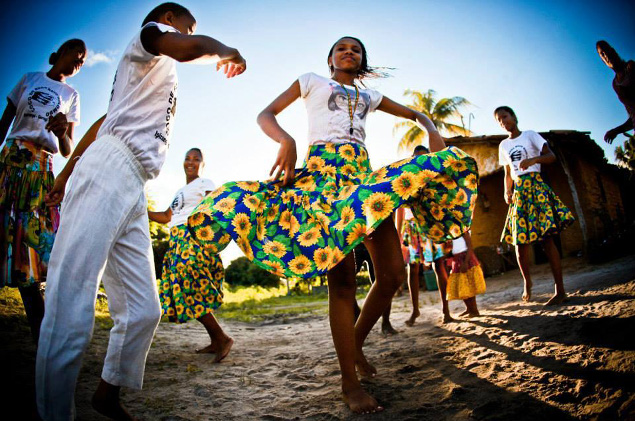
Dança de Coco
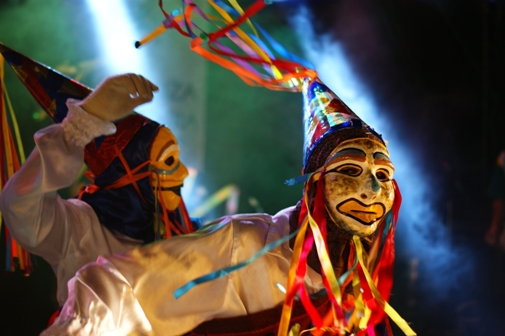
Reisado
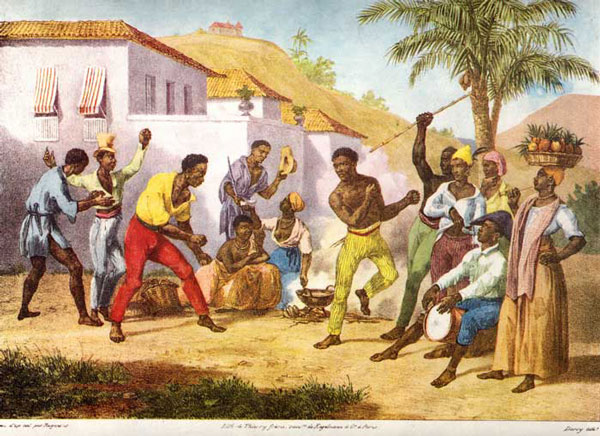
Capoeira - Origem
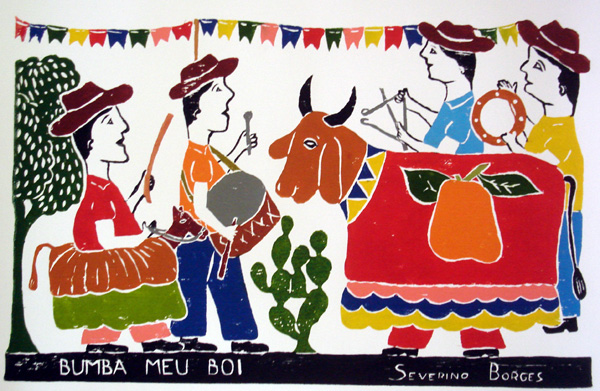
Bumba meu Boi
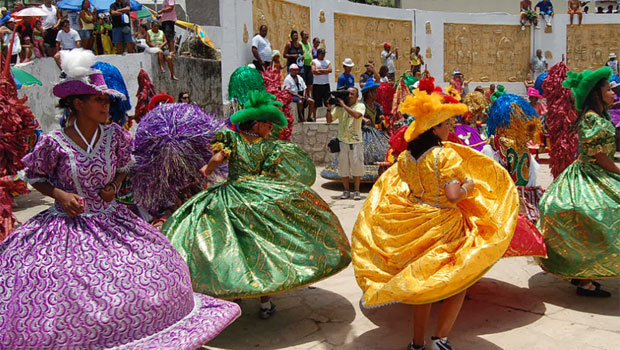
Carnaval em Pernambuco
– Carnival
The carnival is the most famous popular event in the Northeast, especially in Salvador, Olinda and Recife. The June festivals of Caruaru (PE) and Campina Grande (PB) also stand out. The bumba meu boi festivities are traditional in all northeastern states.
Bumba meu Boi
Bumba meu Boi is a celebration that presents a small drama. The owner of the ox, a white man, witnesses a black man stealing his animal to feed his pregnant wife who was craving ox tongue. They kill the ox, but then it has to be resurrected.
– Capoeira
The Capoeira was introduced in Brazil by African slaves from the northeast, it is considered a fighting modality and also a dance. It quickly acquired followers in the northeastern states, mainly in Bahia and Pernambuco.
The instrument used during capoeira performances is the berimbau, which is made up of a bow, cut gourd, caxixi (basket with seeds), stick and dobrão (coin).
– Reisado
The Reisado is a cultural manifestation brought by the Portuguese colonizers. It is a popular spectacle of the Christmas and Kings festivals, whose stage is the public square, the street. In the Northeast, from December 24, the various Reisados come out, each neighborhood with its own, singing and dancing.
The participants of the Reisados believe they are continuators of the Magi who came from the East to visit the Child Jesus in Bethlehem.
– Coconut Dance
The Coco is a dance style widely practiced in the states of Alagoas, Paraíba, Pernambuco and Rio Grande do Norte.
The dance is an expression of the venting of the popular soul, of the most suffering people of the Brazilian Northeast; moreover, it was the favorite dance of the cangaceiros; Lampião and other cangaceiros danced in their hours of rest and distraction.
– Frevo
The Frevo came about through capoeira, because the capoeirista goes out dancing the frevo in front of the cordões, the music bands, executing steps similar to that of capoeira. It is a dance of collective hallucination, of the Pernambuco carnival, it is practiced in halls and in the streets.
– Terno de Zabumba
Terno de Zabumba is a typical musical ensemble of the Northeast, which always brightens up the parties. The Terno de Zabumba plays both a profane and a religious role. They play the “salvas” during prayers and novenas. It is also known by the names of Terno de Música, Esquenta Mulher, Cabaçal and Banda de Couro.
– Maracatu
The Maracatu originated in Recife (PE) in the northeast, it emerged during the processions in praise of Nossa Senhora do Rosário dos Negros, who beat the xangô (candomblé) all year round. The maracatu is a simple procession, initially it had a highly religious stamp, today it is a mixture of primitive music and theater.
– Marujada
Marujada is a very old popular dance. It consists of the dramatization of the Portuguese struggles, of the tragedy that was the maritime conquest.
– Quilombo
Quilombo is a traditional Alagoas folk dance, purely Brazilian theme, reliving the time of Colonial Brazil. It dramatizes the escape of the slaves, who went to find a safe place to hide, in the Serra da Barriga, forming the Quilombo dos Palmares.
– Candomblé
Candomblé consists of a cult of African origin brought by black slaves, at the time of colonial Brazil. In Bahia this cult is called candomblé, in Pernambuco it is called xangô, in Maranhão, tambor de menina. Nowadays candomblé, in some regions, is very modified due to the influence of whites.
– Afoxê
Afoxê is the sacred participating in the profane. It is a religious obligation that members of candomblés (of Jeje-Nagô origin) must fulfill. It is a branch of candomblé suitable for carnival. It begins with a dispatch to Exu, so that he does not interrupt the carnival festivities, they give him palm oil farofa with olive oil.
– Feast of Iemanjá
The Festa de Iemanjá in the northeast is a thanksgiving to the Queen of the Sea. The biggest celebration of Iemanjá takes place in Bahia, in Rio Vermelho, on February 2. All the people who have an “obligation” to the Queen of the Sea go to the beach. This cultural event brings together all the candomblés of Bahia. They bring flowers and gifts, especially mirrors, combs, jewelry and perfumes.
Washing of Bonfim
– Lavagem do Bonfim is one of the biggest popular religious festivals in Bahia. It is held on a Thursday in January. Thousands of pilgrims arrive at the Sanctuary of Senhor do Bonfim, in Bahia. Senhor do Bonfim is the African Oxalá, there are also Catholic promises of “church washing”. The faithful wash the steps of the church with water and flowers.
– Cordel Literature
Literatura de Cordel is one of the cultural manifestations of the Northeast, it consists of the elaboration of small books containing stories written in prose or verse, the subjects are the most varied: challenges, stories linked to religion, rites or ceremonies.
– Northeastern Crafts
Another cultural element of extreme importance in the Northeast are the crafts. The variety of handicraft products in the region is immense, among them we can highlight the woven nets, lace, sieve, leather products, ceramics, wood, among others.
– Northeastern cuisine
The Northeastern cuisine is very diverse and stands out for its strong spices and spicy foods.
The typical dishes of the northeast are: carne de sol, buchada de bode, sarapatel, acarajé, vatapá, cururu, feijão verde, canjica, tapioca, fish, seafood, etc. The fruits ciriguela, umbu, buriti, cajá and macaúba are also common.
Cultural and Religious Aspects of the Northeast Region



















